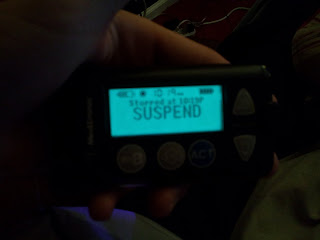In this interview I sat down with my dad to discuss frequently asked questions about living with diabetes.
How long have you had diabetes?
I have had diabetes for 12 years. I was diagnosed when I was 5 and am now 17, a junior in HS.
Have you had to quit sports because of your diagnosis?
No, I have not. Matter of fact, I play more sports.
I imagine you can only play for a short period of time before you have to stop. Is that true?
No, I keep playing until I want to stop. But, I do bring extra juice boxes and my blood meter to monitor my blood glucose levels.
Can you eat candy or foods with concentrated sugar?
Yes, I can. To maintain a diet with diabetes, I measure the amount of carbohydrates I ingest for meals and snacks and balance that against the insulin required to break down the sugar. However, while I can eat all foods any normal person can eat, it is important that you maintain a healthy diet with this disease.
How do you know if your blood sugar is high or low?
It is different with every person, but when I feel my blood sugar is high, I am quite thirsty and tired/sluggish. Therefore, I want to drink a lot of water to ensure I don't develop ketones. When I am low, I feel weak and dizzy, so I counter that with a juice box.
How often do you check your blood glucose levels? Does it hurt?
I check it a minimum of four times per day (before breakfast, lunch, dinner, and bedtime) When active (playing sports) I will check it more.
When I was first diagnosed, I felt a little pinch. Now, there is no pain.
Do you use insulin syringes or an insulin pump?
I did use insulin syringes until I was about 15. Then, I switched to the pump. At first I was anxious about the insulin pump, because I knew the syringes so well, but I am now very happy with the pump.
Have you had any health issues related to the diabetes?
No, because I take my health and maintenance of the disease very seriously.
What can't you do with diabetes?
There is nothing that can hold you back as long as you respect the disease and the importance of good health.








